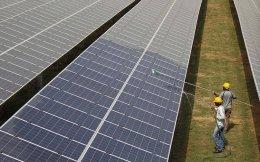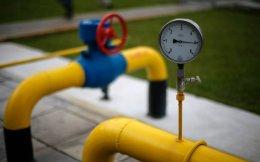Following the disappointing post-IPO performances of two richly valued Power stocks - Adani Power and NHPC – it is refreshing to see Indiabulls Power (IBP) price its IPO at a discount of 25-30% to other private sector developers of similar profiles (based on Mcap/Total MW). That being said, this discount makes sense since:
(a) IBP has no operational capacity as yet; (b) first commissioning is likely only in FY12; and (c) there is a likelihood of further equity raising over the next two years. Uncertainty on the PPA for the Amaravati phase 1 power plant (pricing is still not known) & the Nashik power plant (PPA is still not signed) and doubts about the commerciality of the Bhaiyathan plant (65% of offtake has been signed at Rs 0.81 per Kwh vs the prevailing long term PPA of Rs 2.6-2.9 per unit) pose further concerns. As a result, although IBP looks cheap on the face of it, in light of these issues, even at the lower end of the price band, we can’t spot near term valuation upside.
\n
BACKGROUND
\n
Indiabulls Power (IBP) is a subsidiary of Indiabulls Real Estate, a part of the Indiabulls Group focussed on construction and development of properties. IBP currently has five thermal power projects, adding up to 6,600 MW, under development. Whilst the first project of 1,335 MW is likely to be operational by Feb 2012, the balance 5,265 MW is likely to be operational by FY14.
Between Oct 12-15th IBP will go public with an issue of 339.8 mn equity shares (plus a green shoe option upto 50.9 mn shares) priced at Rs 42-45 to raise ~Rs 17 bn ($0.37bn) at the top end of the price band (for the purposes of this note we assume that green shoe option will be exercised). The public issue will constitute around 19% of the post issue shares outstanding. If the IPO price is Rs 45, the company would be valued at Rs 95 bn (~2.1 bn) and would
trade at 2.3x FY10 book value.
\n
Our reading of the prospectus suggests that of the ~Rs.17 bn sought by IBP, Rs 7.8 bn will be used for part financing of Amravati Phase 1 and Rs 6.6 bn will go for financing the Nashik project. The balance will be utilized for funding working capital, issue expenses and general corporate expenses. A summary of all the projects under various stages
of developments is shown in the Table below.
\n
\n
Fuel sourced for all projects which have achieved financial closure: IBP has entered into long term coal linkages and has captive coal blocks allocated for Amravati (phase one), Nashik and Bhaiyathan power projects. The IPO proceeds will be used to achieve financial closure on all three projects. Whilst IBP has received coal linkages from the Ministry of Coal and a letter of Assurance from Mahanadi, Western and South Eastern coalfields, a captive coal block from
CSEB has been allotted for the Bhaiyathan power project. For the balance two projects the fuel supply arrangement is yet to be ascertained.
\n
Parent company has a strong balance sheet: IBP is a subsidiary of Indiabulls Real Estate Limited (IBREL), a well known company engaged in construction and development of properties. Currently IBREL holds a 71% stake in IBP which post dilution is likely to go down to 58%. In FY09 on a standalone basis, IBREL had a cash of Rs 50 bn ($1.09 bn) and a debt:equity ratio of 0.07x.
\n
This augurs well for IBP as it might not have to resort to either the capital market or on anchor investors for sourcing the balance equity requirement of Rs 41.5 bn ($ 0.9 bn) which will be required even if the current IPO is successful. Besides this IBP has also roped in strong strategic foreign investors such as FIM and LNM India Ventures Limited (steel tycoon L N Mittal’s vehicle) at the Pre-IPO level. FIM and LN Mittal ventures have invested at Rs 33 per share and will hold 14.4% and 8.6% stake post dilution.
\n
HOWEVER, THE IPO RAISES A NUMBER OF QUESTIONS....
\n
(I) Chinese equipment: We are concerned about the quality of equipment supplied by Chinese vendors. Given the limited experience that Chinese vendors have of operations in India, at least some of the problems relating to Chinese kit seems to be due to ‘teething’ problems. Sterlite’s Balco unit and Haryana Power Generation Corporation’s Yamunanagar unit has been facing stabilization issues since installation in March 07 and November 07 respectively. Also, amongst the more recently ordered equipment, disappointments continue.
\n
In Lanco’s Amarkantak project, the turbine failed to kick off. In West Bengal Power Development Corporation’s 600 MW Sagardighi unit, the turbine collapsed. Furthermore our primary data suggests that Chinese equipment might not offer the high heat rates that equipment manufactured by Indian vendors does.
As a result the coal consumption per unit increases which in turn leads to higher cost of generation.
\n
Questions for management
a) Why did IBP give the entire order to Chinese vendors given the short history associated with Chinese equipment in India?
b) Was the selection of vendors based on a global tender? If yes, who were the other vendors participating in the tender process?
c) Our primary data suggests that the average life of the Chinese equipment ranges from 7-10 years? Given the fact that IBP has signed PPAs up to 25 years, is there a provision made by IBP in case the equipment undergoes a replacement cycle?
\n
(II) Funding of projects: Given the implementation schedule highlighted for all the power projects in the RHP (the entire 6,600 MW is expected to be operational by FY14) and the mismatch between the cash position post the fund raise (~Rs 39.5 bn) versus the equity required (Rs 77.6 bn of equity funding), there is a likelihood of further capital raising.
\n
Questions for management
a) Given that the parent company Indiabulls Real estate has cash of ~Rs 50 bn (~$1.09 bn) on the balance sheet and is an unlevered company (FY09 debt equity of 0.07), is there a likelihood of the promoters increasing their stake in IBP post-IPO? If so, is it safe to assume that the dilution will happen at a premium to the IPO price?
\n
b) Management said at the recent analyst meeting that following the IPO, the company will be in a position to fund the entire portfolio of 6,600 MW. Can you throw some light on how this will be done without further dilution? (Note: operating cashflow will be absent until FY13. Though the Nashik power plant is scheduled to go live in Feb 2012, we do not think it will generate any material cash flows in FY12.)
\n
(III) Amravati Power project (phase one): Amravati project (phase one) will have two super critical units of 660 MW each with a combined capacity of 1,320 MW. For this power project (phase one) IBP has issued order to its wholly owned subsidiary Elena Power and Infrastructure (EPIL) to execute the project on an EPC basis. EPIL has in turn issued orders to China based SEPCO for executing the project on an EPC basis. IBP has entered into a PPA for 1,000MW with Tata Power Trading Company (TPTL) Limited and also an MOU with Maharashtra State Electricity Distribution Company Limited (MSEDCL) for 1,000 MW for the same project.
\n
Questions for management
a) Why does IBP have a PPA and an MOU with separate parties for the same project?
b) When is the case 1 bidding expected to open for MSEDCL? If the company wins this bid, will it have to still pay the 1.5% fixed trading margin to TPTCL given that it has already signed a PPA with TPTCL?
c) Apart from MSEDCL is the company in talks with any other distribution company given that upto 700 MW, Amaravati has a right to participate independently in all competitive bidding process?
d) Has the company finalized the name of the boiler-turbine-generator vendor? If no, then what is the timeline for the same?
e) Despite Elena Power and Infrastructure Limited (EPIL, a subsidiary of IBP) not having any prior experience in executing EPC work, why was it selected for executing the EPC work for this project? (Note: EPIL in turn given orders to China based SEPCO for executing the EPC work.)
\n
Relative valuation
Since IBP is a company with large portfolio of assets under construction, it is best to compare it on a Market cap/Total MW basis where ‘total MW’ includes current operational plus financially closed projects. IBP’s peer group amidst private sector developers currently trade at Rs 31mn/MW and 4.5x Book Value per share. As compared to the peers, IBP, at the top end of the IPO price band, trades at a discount of 24% and 50% on Mcap/MW and P/BV respectively.
\n
Whilst it is refreshing to see IBP price it’s IPO at a discount to other
private sector developers unlike Adani power, this discount makes sense since:
\n
(a) IBP has no operational capacity as yet;
(b) first commissioning is likely only in FY12;
(c) there is a likelihood of further equity raising over the next two years and
\n
(d) there are doubts on the commerciality of the Bhaiyathan plant (1,320 MW) as 65% of the PPA is signed at 0.81 per unit (as against operating cost excluding depreciation of ~0.65 per unit). As a result the DCF value of the plant is negligible. If we exclude the 1,320 MW then the Mcap/ MW for IBP at the top end of the IPO stands at Rs 35.6 mn per MW which is a premium of 14% to its peers (see red font in table 4 below). Whilst bulls might say that such exclusion is unfair, we believe that such exclusion is justified as Bhaiyathan adds negligible value to the company.
\n
Uncertainty on the PPA for the Amaravati phase 1 power plant (pricing is still not known) & the Nashik power plant (PPA is still not signed) pose further concerns. As a result, although IBP looks cheap on the face of it, in light of these plus the issues addressed in point (a) to (d), even at the lower end of the price band, we can’t spot near term valuation upside as excluding Bhaiyathan the IPO even at the lower band is priced at a premium of 7% to its peers.
\n





